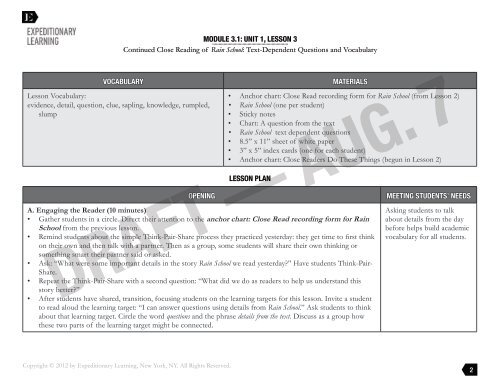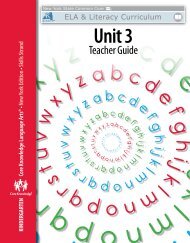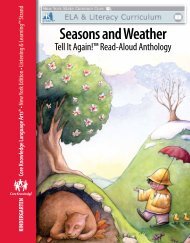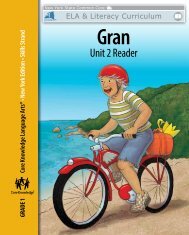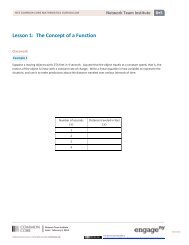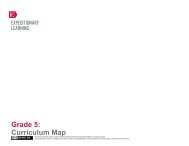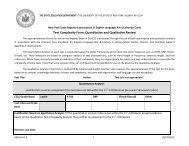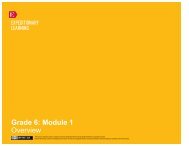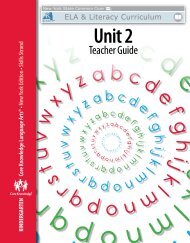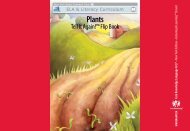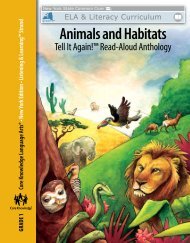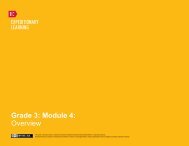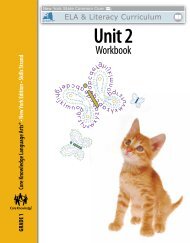Grade 3 ELA Module 1, Unit 1, Lesson - EngageNY
Grade 3 ELA Module 1, Unit 1, Lesson - EngageNY
Grade 3 ELA Module 1, Unit 1, Lesson - EngageNY
Create successful ePaper yourself
Turn your PDF publications into a flip-book with our unique Google optimized e-Paper software.
VOCABULARY MATERIALS<br />
<strong>Lesson</strong> Vocabulary:<br />
evidence, detail, question, clue, sapling, knowledge, rumpled,<br />
slump<br />
MODULE 3.1: UNIT 1, LESSON 3<br />
Continued Close Reading of Rain School: Text-Dependent Questions and Vocabulary<br />
Copyright © 2012 by Expeditionary Learning, New York, NY. All Rights Reserved.<br />
• Anchor chart: Close Read recording form for Rain School (from <strong>Lesson</strong> 2)<br />
• Rain School (one per student)<br />
• Sticky notes<br />
• Chart: A question from the text<br />
• Rain School text dependent questions<br />
• 8.5” x 11” sheet of white paper<br />
• 3” x 5” index cards (one for each student)<br />
• Anchor chart: Close Readers Do These Things (begun in <strong>Lesson</strong> 2)<br />
LESSON PLAN<br />
OPENING MEETING STUDENTS’ NEEDS<br />
A. Engaging the Reader (10 minutes)<br />
• Gather students in a circle. Direct their attention to the anchor chart: Close Read recording form for Rain<br />
School from the previous lesson.<br />
• Remind students about the simple Think-Pair-Share process they practiced yesterday: they get time to first think<br />
on their own and then talk with a partner. Then as a group, some students will share their own thinking or<br />
something smart their partner said or asked.<br />
• Ask: “What were some important details in the story Rain School we read yesterday?” Have students Think-Pair-<br />
Share.<br />
• Repeat the Think-Pair-Share with a second question: “What did we do as readers to help us understand this<br />
story better?”<br />
• After students have shared, transition, focusing students on the learning targets for this lesson. Invite a student<br />
to read aloud the learning target: “I can answer questions using details from Rain School.” Ask students to think<br />
about that learning target. Circle the word questions and the phrase details from the text. Discuss as a group how<br />
these two parts of the learning target might be connected.<br />
Asking students to talk<br />
about details from the day<br />
before helps build academic<br />
vocabulary for all students.<br />
DRAFT — AUG. 7<br />
2


